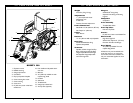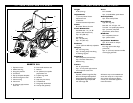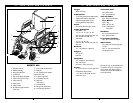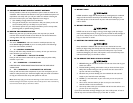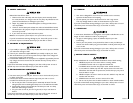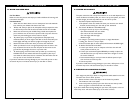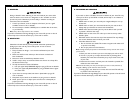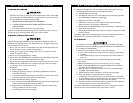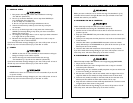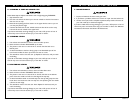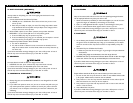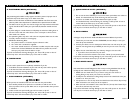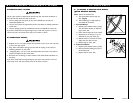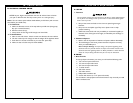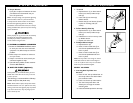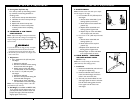
22
23
930300 Rev.C
930300 Rev.C
VI. WARNINGS: FALLS & TIP-OVERS
I. CURBS & STEPS
1. Each person who helps you should read and follow the warnings
“For Safe Use” (Section VII).
2. Do not try to climb or descend a curb or step alone UNLESS you
are a skilled rider of this chair and:
a. You can safely do a “wheelie”; and
b. You are sure you have the strength and balance to do so.
3. Unlock and rotate anti-tip tubes up, out of the way, so they do
not interfere.
4. Do not try to climb a high curb or step (more than 4 inches high)
UNLESS you have help. Doing so may cause your chair to exceed its
balance point and tip over.
5. Go straight up and straight down a curb or step. If you climb or descend
at an angle, a fall or tip-over is likely.
6. Be aware that the impact of dropping down from a curb or step can
damage your chair or loosen fasteners.
If you fail to heed these warnings damage to your chair, a fall, tip-over or loss of
control may occur and cause severe injury to the rider or others.
J. STAIRS
1. NEVER use this chair on stairs UNLESS you have someone to help you.
Doing so is likely to cause a fall or tip-over.
2. Persons who help you should read and follow the warnings
“For Attendants” (p. 16), and the “For Safe Use” (Section VII).
If you fail to heed these warnings damage to your chair, a fall, tip-over or loss of
control may occur and cause severe injury to the rider or others.
K. ESCALATORS
NEVER use this chair on an escalator, even with an attendant. If you do, a fall
or tip-over is likely.
If you fail to heed these warnings damage to your chair, a fall, tip-over or loss of
control may occur and cause severe injury to the rider or others.
▲
!
Before you assist a rider, be sure to read the warnings “For Attendants” (p. 16)
and follow all instructions that apply. Be aware that you will need to learn safe
methods best suited to your abilities.
A. LEARNING TO DO A “WHEELIE”
Follow these steps to help the rider learn to do a “wheelie”:
1. Read and follow the warnings for “WHEELIES.” (See p. 18)
2. Stand at the rear of the chair.You must be able to move with the chair to
prevent a tip-over.
3. Keep your hands BENEATH the push handles, ready to catch the rider if the
chair tips back.
4. When you are ready, have the rider place his or her hands on the forward part
of the handrims.
5. Have the rider make a quick BACKWARD movement of the rear wheels,
quickly followed by a hard FORWARD thrust. (This will tilt the chair up on the
balance point of the rear wheels.)
6. Have the rider make small movements of the handrims to stay in balance.
If you fail to heed these warnings damage to your chair, a fall, tip-over or loss of
control may occur and cause severe injury to the rider or others.
B. DESCENDING A CURB OR SINGLE STEP
Follow these steps to help a rider descend a curb or single step going BACKWARD:
1. Stay at the rear of the chair.
2. Several feet before your reach the edge of the curb or step, turn the chair
around and pull it backward.
3. While looking over your shoulder, carefully step back until you are off the curb
or stair and standing on the lower level.
4. Pull the chair toward you until the rear wheels reach the edge of the curb or
step.Then allow the rear wheels to slowly roll down onto the lower level.
5. When the rear wheels are safely on the lower level, tilt the chair back to its
balance point.This will lift the front casters off the curb or step.
6. Keep the chair in balance and take small steps backward.Turn the chair around
and gently lower front casters to the ground.
If you fail to heed these warnings damage to your chair, a fall, tip-over or loss of
control may occur and cause severe injury to the rider or others.
VII. WARNINGS: FOR SAFE USE
▲
!



